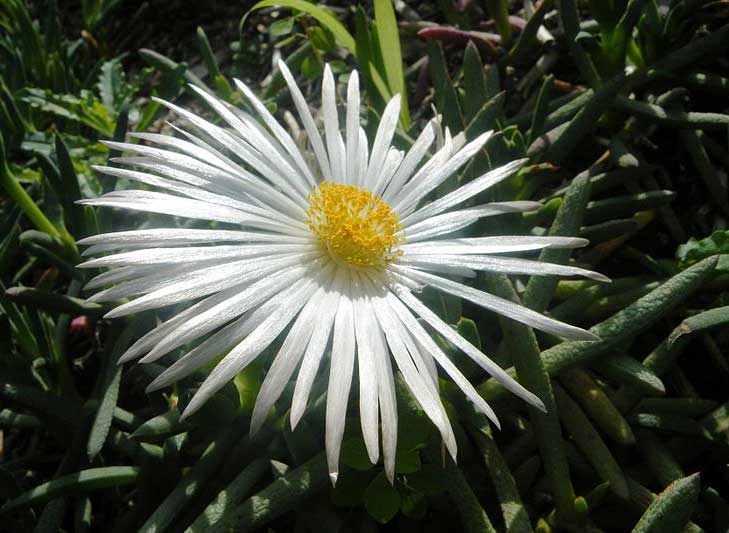
Jordaaniella anemoniflora
Classification System: APG IV
Superregnum: Eukaryota
Regnum: Plantae
Cladus: Angiosperms
Cladus: Eudicots
Cladus: Core eudicots
Ordo: Caryophyllales
Familia: Aizoaceae
Subfamilia: Ruschioideae
Tribus: Ruschieae
Genus: Jordaaniella
Species: Jordaaniella anemoniflora
Name
Jordaaniella anemoniflora (L.Bolus) van Jaarsv., 2002
Synonyms
Cephalophyllum anemoniflorum (L. Bol.) Schwant.
Mesembryanthemum anemoniflorum L. Bol.
Distribution
Native distribution areas:
Continental: Africa
Regional:Southern Africa
South Africa (W-Cape Prov.)
References: Brummitt, R.K. 2001. TDWG – World Geographical Scheme for Recording Plant Distributions, 2nd Edition
References
Jaarsveld, E.J. van, Haseltonia 8: 41 2001 publ. 2002.
Links
Hassler, M. 2018. Jordaaniella anemoniflora. World Plants: Synonymic Checklists of the Vascular Plants of the World In: Roskovh, Y., Abucay, L., Orrell, T., Nicolson, D., Bailly, N., Kirk, P., Bourgoin, T., DeWalt, R.E., Decock, W., De Wever, A., Nieukerken, E. van, Zarucchi, J. & Penev, L., eds. 2018. Species 2000 & ITIS Catalogue of Life. Published on the internet. Accessed: 2018 Jul. 09. Reference page.
International Plant Names Index. 2018. Jordaaniella anemoniflora. Published online. Accessed: Jul. 09 2018.
The Plant List 2013. Jordaaniella anemoniflora in The Plant List Version 1.1. Published on the internet. Accessed: 2018 Jul. 09.
Tropicos.org 2018. Jordaaniella anemoniflora. Missouri Botanical Garden. Published on the internet. Accessed: 2018 Jul. 09.
Jordaaniella anemoniflora, the anemone vygie, is a plant species in the family Aizoaceae. It is indigenous to a tiny area of the Cape Flats suburbs within the city of Cape Town, South Africa, but is now extinct in the wild.
This is a small, delicate succulent groundcover. It has fat, grey leaves and large pink or white flowers.
The natural habitat of the anemone vygie now lies beneath the urban sprawl of the city of Cape Town. Its last population in the wild was at Macassar on the Cape Flats but it was destroyed in 1992 to make way for housing. Consequently, it is now extinct in the wild, although specimens have been preserved at botanical gardens such as Kirstenbosch. There is currently a project to reintroduce the plant to the grounds of a military base that is near to its original Macassar habitat.
This unique little plant grows surprisingly well in coastal gardens, and it makes a very attractive groundcover for sunny parts of the garden. It can be propagated very easily by cuttings. [1]
References
http://www.plantzafrica.com/planthij/jordaan.htm
Retrieved from "http://en.wikipedia.org/"
All text is available under the terms of the GNU Free Documentation License

